Modern vehicles are equipped with sophisticated computer systems that monitor virtually every aspect of your car’s operation. When something requires attention, your car dashboard communicates through warning lights and symbols. Understanding these alerts can help you address issues promptly, potentially saving you from expensive repairs or dangerous situations, especially when driving in Uganda’s diverse conditions.
Critical Warning Lights: Stop Driving Immediately
These red warning lights indicate serious problems that require immediate attention. If any of these illuminate while driving, safely pull over as soon as possible and seek professional assistance.
Check Engine Light (CEL)
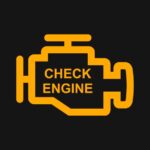
Appearance: Orange/amber engine-shaped icon
Meaning: Indicates the onboard diagnostics system has detected an engine management issue.
Action Required: While sometimes you can continue driving with reduced power, it’s best to have your vehicle checked by a professional as soon as possible. Continuing to drive might cause additional damage.
Common Causes: Faulty oxygen sensor, loose fuel cap, catalytic converter issues, spark plug/ignition system problems.
Engine Temperature Warning
 Appearance: Red thermometer symbol, sometimes in liquid
Appearance: Red thermometer symbol, sometimes in liquid
Meaning: Engine is overheating, which can cause severe engine damage if ignored.
Action Required: Pull over immediately, turn off the engine, and allow it to cool down. Do not remove the radiator cap while hot.
Common Causes: Low coolant level, cooling system leak, faulty water pump, thermostat issues, or blocked radiator.
Oil Pressure Warning
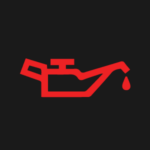 Appearance: Red oil can symbol or “OIL”
Appearance: Red oil can symbol or “OIL”
Meaning: Oil pressure is dangerously low, risking severe engine damage.
Action Required: Stop driving immediately and turn off the engine. Check oil levels if safe to do so, but professional assistance is recommended regardless.
Common Causes: Critically low oil level, oil pump failure, blocked oil passages, or oil pressure sensor malfunction.
Brake System Warning
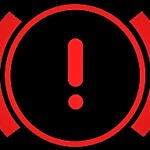 Appearance: Red circle with “!” or “BRAKE”
Appearance: Red circle with “!” or “BRAKE”
Meaning: Issue with the braking system that could compromise stopping ability.
Action Required: Pull over safely and seek professional help. Do not continue driving if brakes feel abnormal.
Common Causes: Low brake fluid, brake pad wear, ABS malfunction, or engaged parking brake.
Battery/Charging System Warning
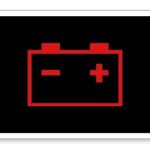 Appearance: Red battery symbol
Appearance: Red battery symbol
Meaning: Vehicle’s charging system is not functioning properly.
Action Required: You may be able to drive for a short time on battery power alone, but seek assistance quickly before the battery depletes completely.
Common Causes: Failing alternator, damaged battery, loose/corroded connections, or broken drive belt.
Important Warning Lights: Prompt Attention Required
These amber/yellow warning lights indicate issues that need attention soon, but generally allow continued driving.
ABS (Anti-lock Braking System) Warning
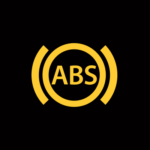 Appearance: Yellow “ABS” within a circle
Appearance: Yellow “ABS” within a circle
Meaning: The anti-lock braking system is malfunctioning.
Action Required: You can continue driving, but your brakes may lock under hard braking. Have the system checked soon.
Common Causes: ABS sensor failure, controller issues, or low brake fluid.
Traction Control/Stability Control Warning
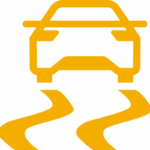 Appearance: Car with skid marks or “ESC”/”ESP”/”DSC”
Appearance: Car with skid marks or “ESC”/”ESP”/”DSC”
Meaning: Traction control or stability control system is malfunctioning or has been turned off.
Action Required: Drive cautiously, especially in wet or slippery conditions. Have the system checked when convenient.
Common Causes: Sensor malfunction, system deactivation, or integrated system issue.
Tire Pressure Monitoring System (TPMS)
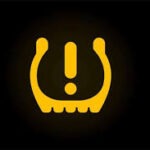 Appearance: Cross-section of tire with exclamation point
Appearance: Cross-section of tire with exclamation point
Meaning: One or more tires have pressure significantly above or below recommended levels.
Action Required: Check tire pressures at the next opportunity and adjust as needed.
Common Causes: Temperature changes, slow leaks, or actual tire damage.
Airbag/SRS Warning
 Appearance: Passenger with airbag or “SRS”
Appearance: Passenger with airbag or “SRS”
Meaning: Issue with the airbag or supplemental restraint system.
Action Required: Have the system checked as soon as possible, as airbags may not deploy properly in an accident.
Common Causes: Sensor malfunction, depleted backup battery, or previous airbag deployment.
Fuel Level Warning
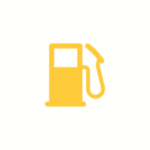 Appearance: Fuel pump or gas tank icon
Appearance: Fuel pump or gas tank icon
Meaning: Fuel level is low, typically with 30-50 kilometers of range remaining.
Action Required: Refuel at the next convenient opportunity.
Common Causes: Simply running low on fuel.
Service Indicator Lights: Plan for Maintenance
These lights are typically informational and indicate routine maintenance is needed.
Service Due Indicator
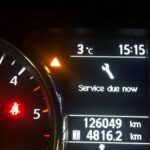 Appearance: Wrench icon or “SERVICE”
Appearance: Wrench icon or “SERVICE”
Meaning: Scheduled maintenance interval has been reached.
Action Required: Schedule service according to your vehicle’s maintenance schedule.
Common Causes: Mileage or time-based service intervals as programmed in your vehicle.
AdBlue/DEF Warning (Diesel Vehicles)
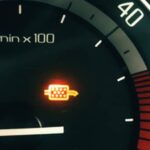
Appearance: “AdBlue” or DEF symbol
Meaning: Diesel exhaust fluid level is low and needs replenishing.
Action Required: Refill the AdBlue/DEF tank before it’s completely empty to avoid reduced engine performance.
Common Causes: Normal consumption of AdBlue during operation.
DPF (Diesel Particulate Filter) Warning
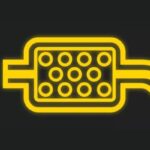 Appearance: Filter-like symbol
Appearance: Filter-like symbol
Meaning: The diesel particulate filter is becoming blocked and requires regeneration.
Action Required: Drive at sustained highway speeds to allow automatic regeneration, or seek service if the light persists.
Common Causes: Repeated short journeys preventing filter self-cleaning.
Information and Status Lights: Normal Operation
These indicators inform you about activated systems and don’t necessarily indicate problems.
High Beam Indicator
 Appearance: Blue headlight symbol with lines
Appearance: Blue headlight symbol with lines
Meaning: High beam headlights are currently active.
Action Required: Switch to low beams when approaching other vehicles to avoid blinding other drivers.
Turn Signal Indicators
Appearance: Green arrows pointing left or right
Meaning: Turn signals are activated in the indicated direction.
Action Required: None, but check if blinking unusually fast (indicates a bulb may need replacement).
Cruise Control Indicator
 Appearance: Speedometer symbol or “CRUISE”
Appearance: Speedometer symbol or “CRUISE”
Meaning: Cruise control is activated.
Action Required: None, normal operation indicator.
Fog Light Indicator
Appearance: Symbol showing light with wavy lines
Meaning: Fog lights are currently active.
Action Required: Turn off when visibility improves or when not needed.
Eco Mode Indicator
Appearance: “ECO” or leaf symbol
Meaning: Vehicle is operating in fuel-efficient mode.
Action Required: None, normal operation indicator.
Regional Warning Lights: Specific to Vehicle Types
Some vehicles have specialized warning lights depending on their features and systems.
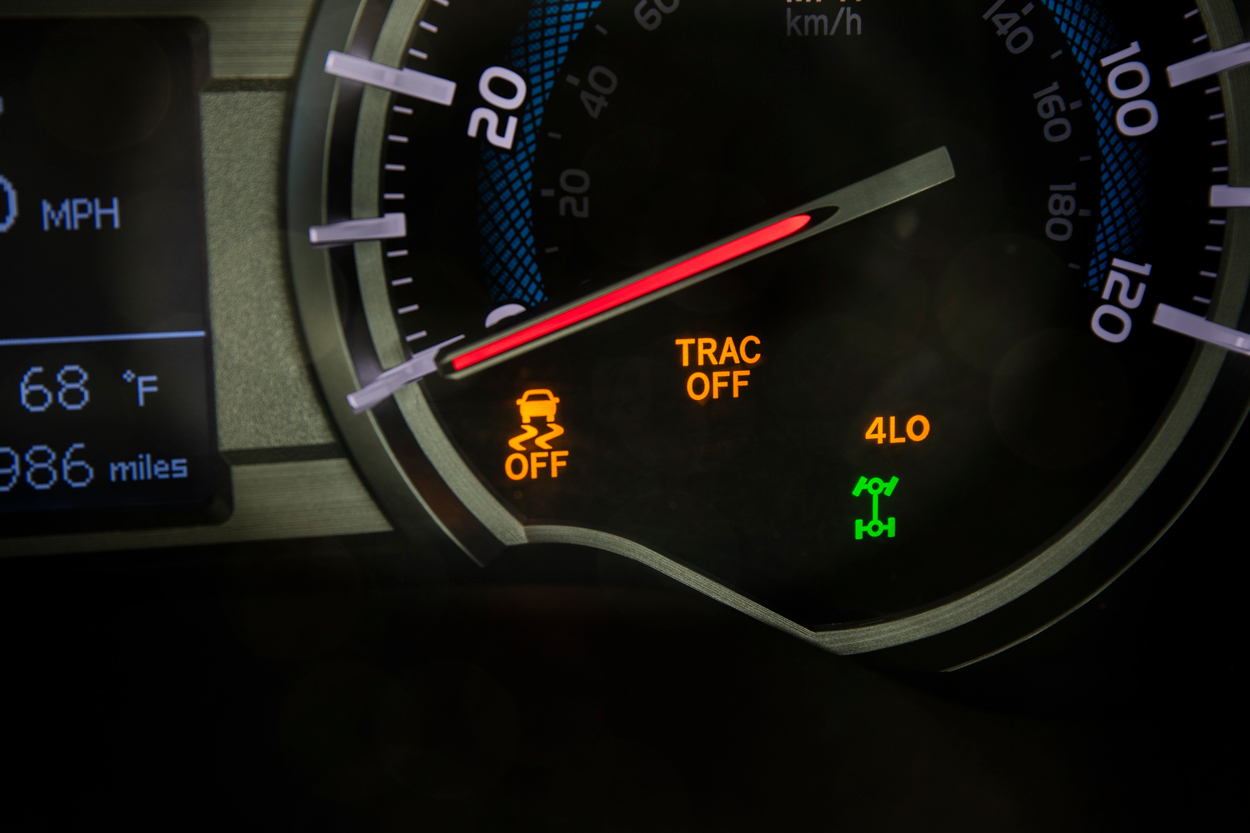
4WD Warning Lights
Appearance: “4WD” with various indicators
Meaning: Issue with the four-wheel drive system or indication of current 4WD status.
Action Required: Depends on specific light – could indicate normal operation or a system fault.
Common in: Off-road vehicles and SUVs, particularly important for Uganda’s varied terrain.
Hybrid/Electric Vehicle Warnings
Appearance: Battery icons or “READY”
Meaning: Status of hybrid system or electric drivetrain.
Action Required: Depends on specific alert – may indicate charging status or system fault.
Common in: Hybrid and electric vehicles.
Diesel-Specific Warnings
Appearance: Glow plug or engine preheat symbol
Meaning: Diesel engine preheating in progress or issue with preheating system.
Action Required: Wait for light to extinguish before starting (when preheating) or seek service if blinking/staying on after starting.
Common in: Diesel vehicles.
What to Do When a Warning Light Appears

- Identify the urgency: Red warnings require immediate action; amber/yellow typically allow continued driving with prompt attention.
- Consult your owner’s manual: Keep your vehicle’s manual accessible to interpret specific warnings for your make and model.
- Check for additional symptoms: Note any unusual sounds, smells, or performance issues accompanying the warning light.
- Use diagnostic tools: Many auto parts stores offer free diagnostic scanning for check engine lights.
- Seek professional help: For critical warnings or persistent issues, contact a qualified mechanic.
Preventive Maintenance to Avoid Warning Lights
Regular maintenance helps prevent many issues that trigger warning lights:
- Follow manufacturer-recommended service intervals
- Check fluid levels regularly (oil, coolant, brake fluid)
- Maintain proper tire pressure
- Address minor issues before they escalate
- Use quality fuel and oils appropriate for your vehicle
Uganda-Specific Considerations
When driving in Uganda’s diverse conditions, certain warning lights deserve extra attention:
- Temperature warning: Uganda’s hot climate, especially in northern regions, can stress cooling systems
- Tire pressure warning: Temperature variations between regions can affect tire pressure
- Brake system warnings: Particularly important when navigating mountainous terrain in western Uganda
- 4WD system alerts: Critical for safely traversing unpaved roads during safari excursions
When to Contact Uganda Car Rental Services
If you experience warning lights while driving a rental vehicle:
- Assess the urgency based on the light color and symbol
- Contact our 24/7 support line for guidance
- If safe, continue to your destination for service
- For critical warnings, pull over safely and request assistance
Our professional drivers in Uganda are trained to interpret warning lights and take appropriate action to ensure your safety and prevent vehicle damage.
Remember that modern vehicles have sophisticated systems designed to alert you before major problems develop. Responding promptly to warning lights can save you from costly repairs and ensure your safety on Uganda’s roads.
Whether you’re exploring Kampala’s urban environment or venturing to remote national parks, understanding dashboard warnings is an essential skill for every driver in Uganda.
Planning to self-drive and require a suitable rental car in Uganda for the business or safari road trip, we will be more than delighted ot offer you our services. Simply contact us now by sending an email to info@ugandacarrentalservices.com or call us now on +256-700135510 to speak with the reservations team.


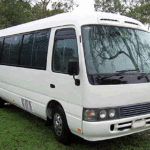

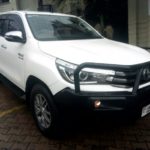
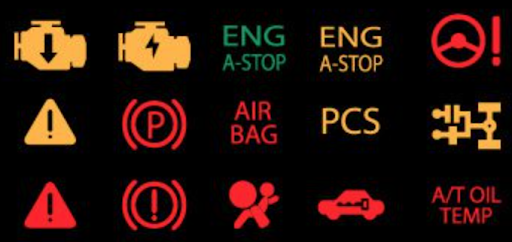




Related Articles
A Deep Dive Into The Toughest Uganda Safari Vehicles
A Beginners Guide To Planning A Uganda Self Drive Safari
Best Time to Visit Uganda for Safaris: Month-by-Month Guide